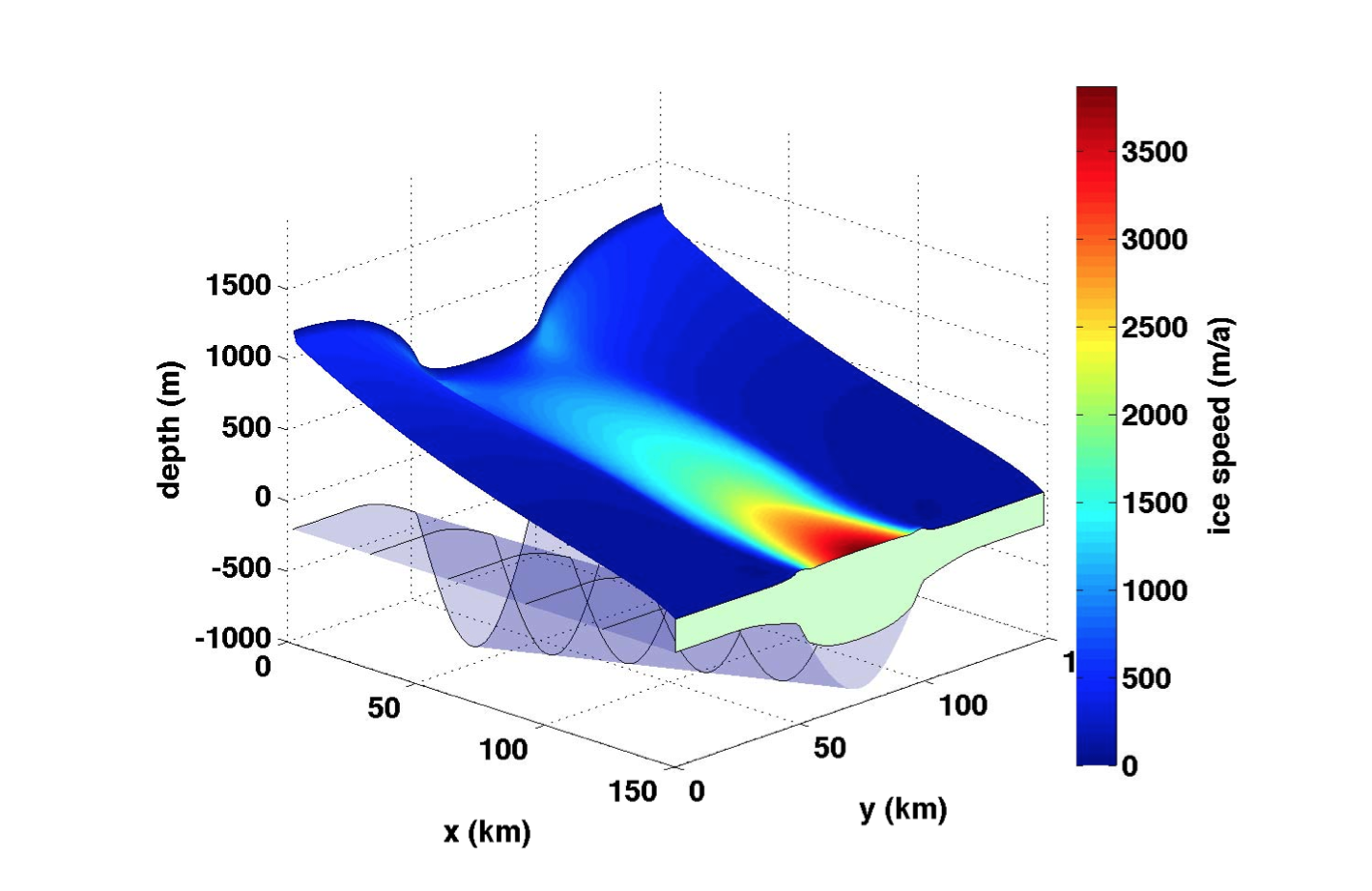Assimilating observations into models of fast streaming ice flow
story by Helen Hill

Dan Goldberg (MIT) has been working with longtime MITgcmer Patrick Heimbach (MIT), looking at new ways to assimilate observations into glaciological flow models capable of representing fast streaming ice flow.
According to Goldberg “Such types of model are necessary to study the impact of ocean warming on ice sheets. This type of behavior is poorly constrained and understood, and with the wealth of observations from new satellite and data products, the burden is on ice models to integrate this data; our framework is a step toward that.”
Up until now, assimilation of observations into large-scale ice models has consisted predominantly of stress balance inversions, which make assumptions about the coverage and accuracy of altimetric and topographic observations, and cannot take account of time-dependence: a shortcoming when dealing with ice streams that evolve on the time scale of decades, such as those flowing into the Amundsen Sea, West Antarctica.
To overcome limitations of such “snapshot” inversions, i.e. their inability to assimilate time-dependent data, incorporate diverse types of observations, or produce initial states suitable for hindcast and prediction simulations, Goldberg and Heimbach developed an adjoint of a time-dependent parallel glaciological flow model.
The model, which implements an isothermal, hybrid shallow shelf-shallow ice stress balance, can represent the floating, fast-sliding, and frozen-bed regimes of a marine ice sheet. Based on Heimbach’s earlier work, the pair are confident that additional “physics”, such as temperature transport and coupling between land ice and ocean circulation, once implemented, can easily be incorporated into the adjoint framework.
The adjoint is generated by a combination of analytic methods and the use of algorithmic differentiation software.
The pair carried out several experiments with idealized geometries and synthetic observations, including inversion of time-dependent surface elevations and past thicknesses, as well as simultaneous retrieval of basal traction and topography from surface data. Additionally, preliminary work with data from Pine Island Glacier reveals a weakness of the ice shelf shear margin to melt rate variability — which is important because current glaciological thinking is that melting has the greatest impact where it is largest, i.e. near the grounding line.
Reference
Goldberg, D.N., and P. Heimbach (2013), Parameter and state estimation with a time-dependent adjoint marine ice sheet model, The Cryosphere Discuss., 2846-2890, doi: 10.5194/tcd-7-2845-2013
Heimbach, P. and V. Bugnion (2009), Greenland ice sheet volume sensitivity to basal, surface, and initial conditions, derived from an adjoint model. Ann. Glaciol., 50 (52), pp. 67–80, doi: 10.3189/172756409789624256 or pdf.


